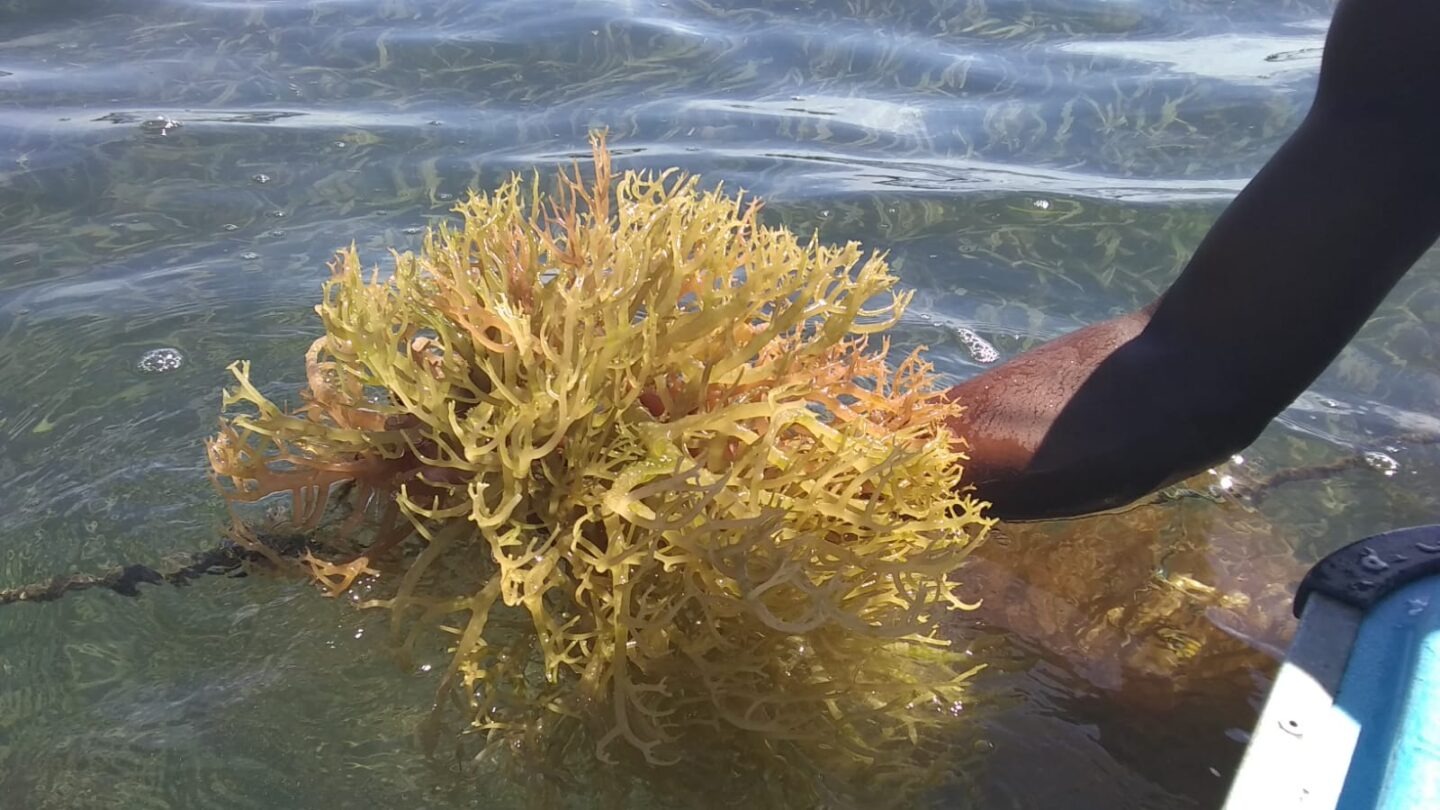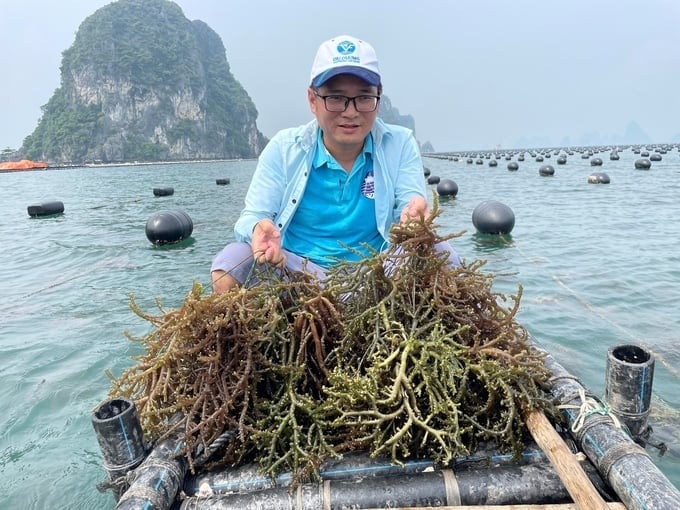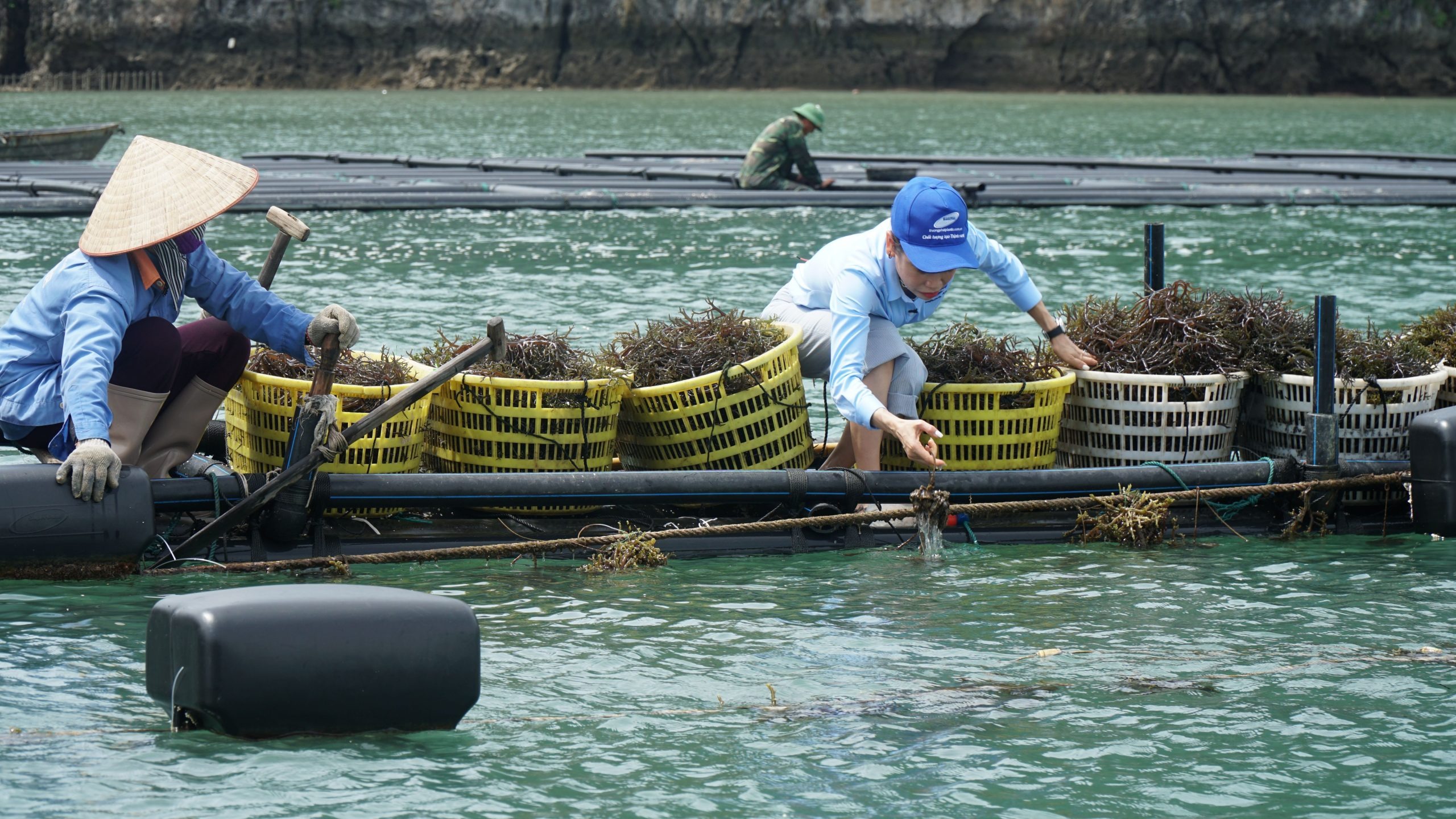Sea moss thrives in the diverse coastal ecosystems of Vietnam. The unique blend of tropical weather, temperature fluctuations, and seasonal changes significantly influences the nutrient absorption and overall health of sea moss. So, how do the climate and weather in Vietnam affect the quality of sea moss?
1. Overview of Vietnam's climate
1.1. Tropical climate characteristics
Vietnam experiences a tropical climate characterized by two distinct seasons: the wet season and the dry season. The wet season typically runs from May to October, marked by heavy rainfall and high humidity levels, while the dry season spans from November to April, featuring lower humidity and cooler temperatures.

Vietnam’s tropical climate offers warm temperatures that enhance sea moss growth year-round.
The average temperature in Vietnam ranges from 25 to 30 degrees Celsius (77 to 86 degrees Fahrenheit), providing optimal conditions for the growth of sea moss. The warm waters of the coastal areas create a favorable environment for various marine species, including sea moss, which thrives in temperatures that range from 20 to 30 degrees Celsius (68 to 86 degrees Fahrenheit).
However, fluctuations in temperature during the transition between seasons can impact the health and abundance of sea moss, stressing the need for monitoring temperature patterns to ensure sustainable harvesting.
Additionally, Vietnam's tropical climate is influenced by monsoon winds, which bring significant amounts of precipitation and can lead to nutrient-rich runoff that enhances the growth of sea moss along the coastal waters. The increase in nutrients, combined with warm temperatures, creates an ideal habitat for sea moss.
1.2. Coastal Regions of Vietnam
The coastal regions of Vietnam extend over 3,200 kilometers, featuring a rich array of marine ecosystems that are essential for cultivating sea moss. These areas are characterized by shallow waters, coral reefs, and mangroves, which provide a suitable habitat for various marine flora and fauna. In particular, the coastal zones benefit from favorable salinity levels and nutrient availability that promote the growth of sea moss.

Abundant rainfall creates nutrient-rich waters, boosting the mineral content of sea moss.
The central and southern coasts of Vietnam, such as the areas around Nha Trang, are especially significant for sea moss production. The interaction between ocean currents and coastal topography contributes to an ecosystem that supports the proliferation of sea moss. For example, the mixing of warm water currents with cooler oceanic waters creates nutrient layers that enhance the growth conditions for sea moss. Furthermore, seasonal monsoons can improve nutrient runoff from inland rivers, further supporting sea moss cultivation.
2. Biophysical factors affecting sea moss growth
2.1. Temperature
Temperature is one of the most critical factors impacting the growth of sea moss. Optimal temperatures for sea moss growth typically range between 20 to 30 degrees Celsius (68 to 86 degrees Fahrenheit). At these temperatures, sea moss exhibits accelerated growth rates and better quality. If the water temperature is consistently below 20 degrees Celsius, the growth of sea moss may slow down substantially, while temperatures exceeding 30 degrees Celsius can lead to stress, causing reduced growth or even mortality.
In Vietnam’s tropical climate, sea moss benefits from warm waters, particularly during the dry season when temperatures can rise. However, fluctuations in temperature due to seasonal changes or climatic events can disrupt the growth cycle of sea moss. For instance, during unseasonably cold months, sea moss may not thrive, affecting the harvest and availability of local communities that depend on it.
2.2. Salinity levels
Salinity levels in coastal waters are another fundamental factor influencing sea moss growth. Sea moss generally thrives in environments with salinity levels between 25 to 35 parts per thousand (ppt). At these levels, sea moss can efficiently absorb necessary nutrients and maintain osmotic balance.

Seasonal temperature changes allow for multiple harvesting opportunities throughout the year.
In coastal areas of Vietnam, salinity can fluctuate due to seasonal changes in rainfall and freshwater runoff from rivers. During the wet season, heavy rainfall can dilute salinity levels, potentially impacting the health of sea moss if it drops too low. Conversely, during dry seasons or droughts, higher salinity can stress sea moss, affecting its growth and productivity.
Farmers often need to monitor salinity levels regularly and implement strategies such as selective harvesting or temporary relocation of sea moss cultivation sites to optimize growth.
2.3. Nutrient availability
Major nutrients like nitrogen, phosphorus, and potassium, as well as trace elements such as iron, are crucial for promoting robust growth and enhancing the quality of sea moss.
The nutrient dynamics in Vietnam's coastal waters are heavily influenced by natural processes, including river discharge, tidal movements, and the decomposition of organic matter. During the rainy season, increased freshwater flow can introduce a wealth of nutrients into the coastal waters, boosting the growth rates of sea moss considerably. However, excessive nutrients, particularly nitrogen and phosphorus from agricultural runoff, can lead to eutrophication, resulting in harmful algal blooms that can compete with or even harm sea moss.
Therefore, the farmers often adopt integrated coastal management practices to ensure nutrient availability without causing adverse environmental effects. By monitoring nutrient concentrations and optimizing cultivation techniques, it becomes possible to enhance the growth and quality of sea moss while safeguarding the health of marine ecosystems.
3. The famous wildcrafted sea moss from Vietnam
Vietnam is renowned for its rich biodiversity and pristine marine environments and one of the standout treasures of its coastal ecosystem is wildcrafted sea moss. Particularly notable is Lam Hong wildcrafted sea moss, which is harvested from the remote islands off the coast of Nha Trang.

Clean, unpolluted waters in remote regions ensure healthy sea moss growth.
Lam Hong wildcrafted sea moss thrives in shallow, nutrient-dense waters, where it absorbs essential minerals and nutrients directly from the ocean. The clean, unpolluted surroundings of these secluded areas contribute to the superior quality of the sea moss. This pristine environment, free from agricultural runoff and industrial pollution, allows the sea moss to grow robustly, enriched with vital minerals such as iodine, calcium, magnesium, and potassium.
Local harvesters employ traditional, artisanal techniques that have been passed down through generations. This meticulous approach involves hand-harvesting the sea moss to ensure that only mature, healthy specimens are collected. By doing so, the integrity of the sea moss is preserved, and the marine ecosystem is protected from damage that can occur with more industrial harvesting methods.
The favorable climatic and weather conditions have contributed to the remarkable quality of sea moss wildcrafted from Vietnam. For more detailed information about this renowned sea moss, please contact us via visiting the official Lam Hong wildcrafted sea moss website!






